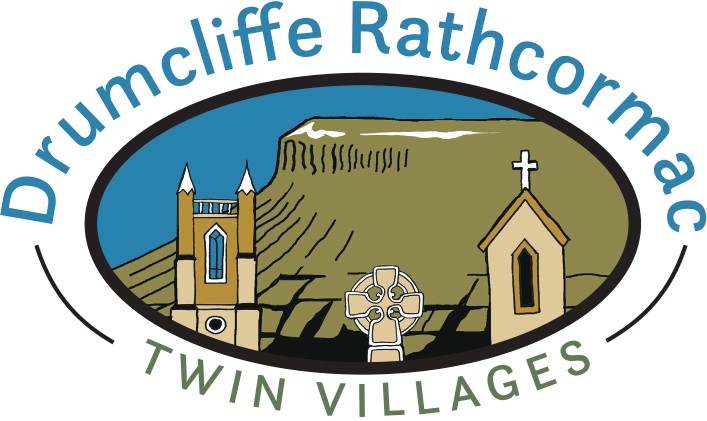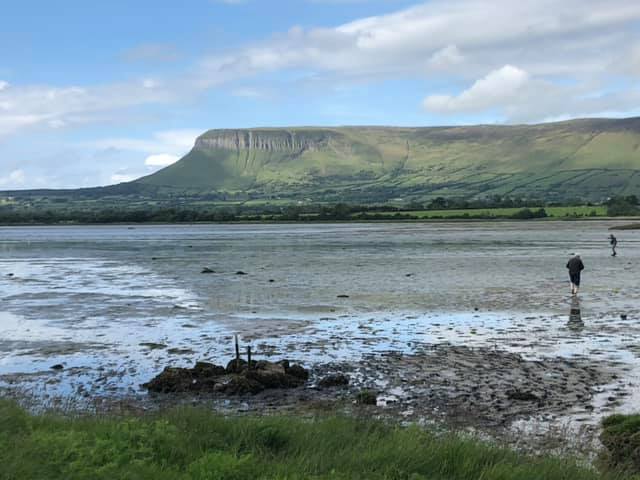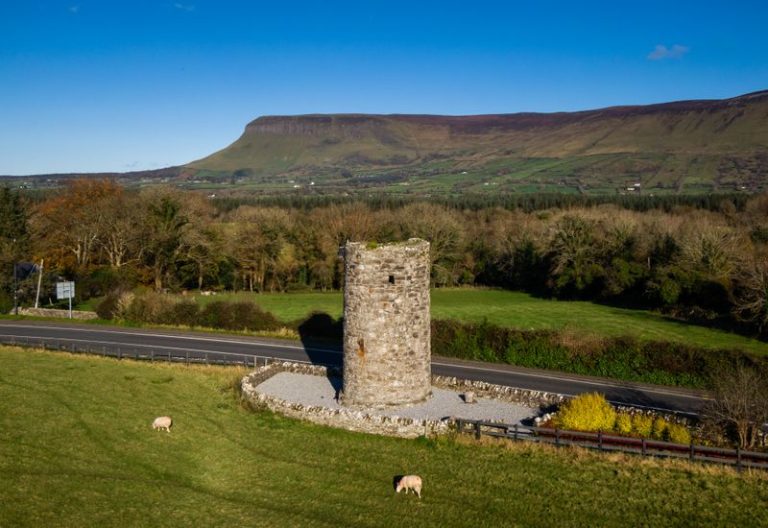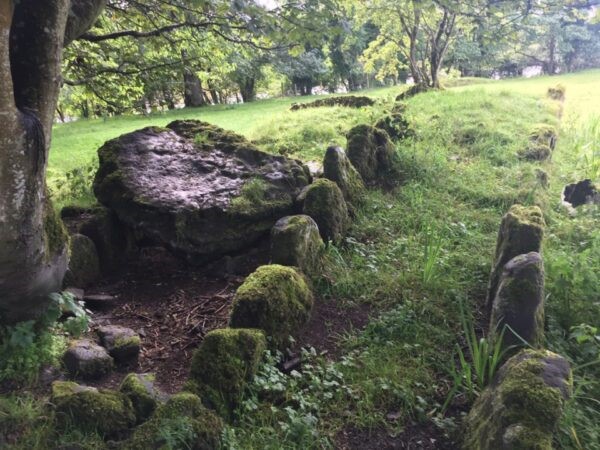Fed by the Drumcliff River, and the Atlantic Ocean, Drumcliffe Estuary (also Drumcliff Bay) is a natural heritage area of European importance. Enclosed to the west by a spit of sand dunes at Lower Rosses, beyond which lies an area of shallow sea (Sligo Bay), the sheltered estuary is fringed by saltmarsh and its extensive mud flats are exposed at low tide. Along the northern shore of the Bay to the west are sandy beaches including Lissadell Strand, above which is Lissadell House, formerly home of the Gore Booth family.
The mudflats and shoreline of the estuary are important feeding grounds for wide variety of wading birds, brent goose, gulls, duck, and other birds. Located to the east of Lissadell is Ballygilgan Nature Reserve, commonly referred to as the ‘goose field’, a Statutory Nature Reserve for barnacle geese wintering in the area.
The estuary is designated as a Special Protection Area (SPA) under the European Union Birds Directive and is included in the Cummeen Strand/Drumcliff Bay (Sligo Bay) Special Area of Conservation due to the variety of habitats found there and its importance to wintering birds. The estuary’s bird life is regularly monitored by local members of BirdWatch Ireland as part of the Irish Wetland Bird Survey.




